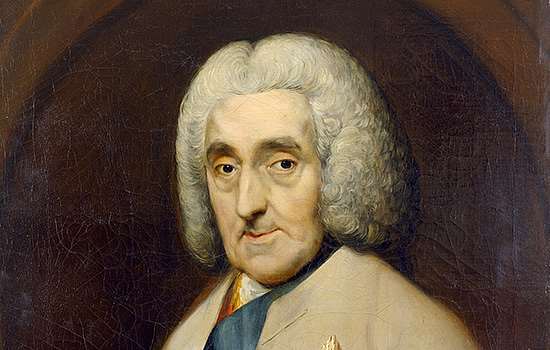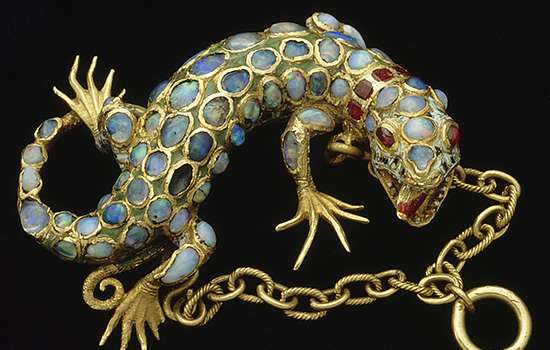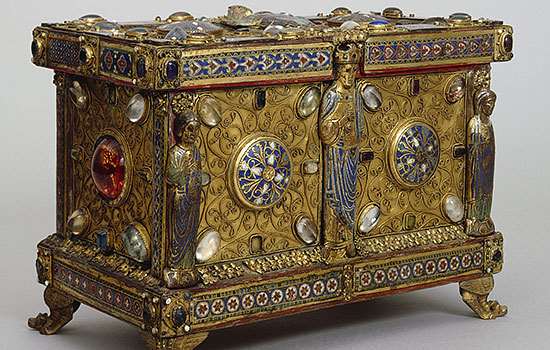Star object
The Love of Angels
- Giulio Bergonzoli
- 1864
- Marble
- Italy
This monumental sculpture shows an angel embracing his mortal female lover. It was inspired by Thomas Moore’s 1822 poem The Loves of Angels, in which the two become tragically separated in heaven.
Bergonzoli’s composition brims with dynamic movement. The nearly life-size female figure twists upwards, leaving a tumbledown trail of fruit and foliage behind her, which blends with the marble base from which she rises. Her arms are thrown up to meet the head of the angel, who hovers in the air, aided by his substantial wings. These form the pinnacle points of the piece, creating a striking silhouette when viewed from the other end of the Long Gallery.
Artists and makers
The Lamentation
- Unknown maker
- About 1510–15
- Silk and wool tapestry with metal thread
- Brussels or Bruges, Belgium
This late medieval tapestry shows the Lamentation, in which Jesus’s dead body was taken down from the cross after his Crucifixion. The Virgin Mary (right), St John the Evangelist (left) and the kneeling St Mary Magdalene support his lifeless body as it is lowered to the ground. Other onlookers mourn the sorrowful scene.
Even working in tapestry, weavers were able to create strikingly naturalistic effects such as the beautifully observed wood grain on the cross and the delicate teardrops rolling down the faces of the group surrounding Christ. In the background are the walls and buildings of Jerusalem.










